Animals build dens or burrows for a plethora of reasons. Some species use dens for shelter, while others use them for reproduction. Animals also build dens for hibernation, food storage, and protection. Although “burrowing” is a characteristic mostly ascribed to small mammals, it might surprise you to discover that some larger animals also build burrows. Here are 6 massive animals that build huge underground dens.
1. Bears

Polar bears used to build dens in the Arctic sea ice but no longer do that due to the ice loss.
©Mario_Hoppmann/Shutterstock.com
Bears are the largest den builders. Although not all bears build dens, some that do are grizzly bears, black bears, and even polar bears. Bears use a lot of “bear-power” when building their dens and actually claw or dig out holes that are large enough for them.
Black bears dig beneath large fallen trees and even under mounds or piles of woody material such as large logs and tree branches. They also look for caves and crevices even if they were previously occupied.
On the other hand, grizzly bears usually opt to dig out holes in the base of large trees in densely vegetated areas with north-facing slopes.
Polar bears, only found in the chilly Arctic circle, used to build dens in the Arctic sea ice but no longer do that due to the ice loss. Instead, they now use their sharp claws to dig into snow and ice. Often, they create a tunnel leading to multiple rooms, such as the bedroom.
Pregnant polar bears build dens by digging a hole just big enough for themselves in snow drifts. By winter, when they give birth, the falling snow covers the cave, making it impossible to be seen above ground.
2. Snakes
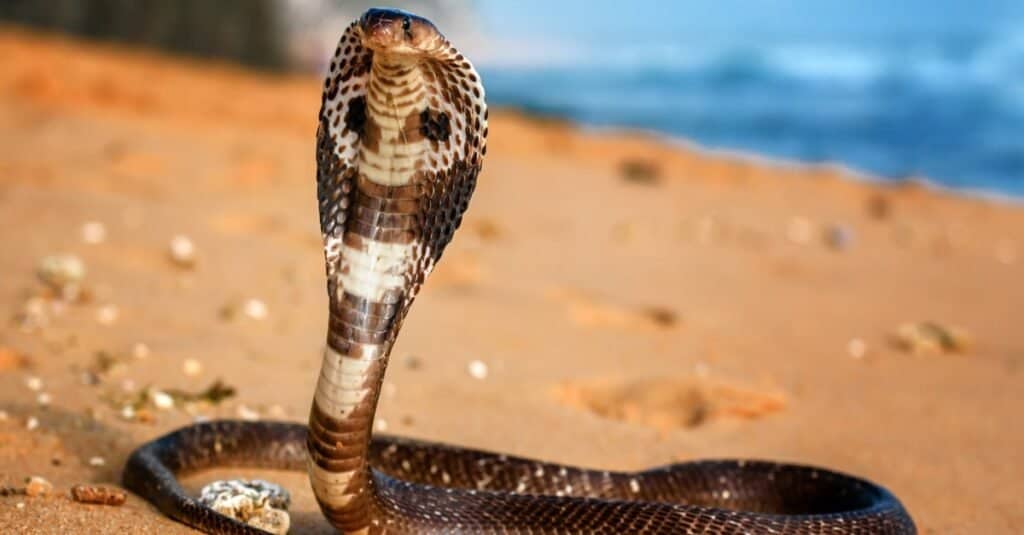
Snake species such as king cobras, copperheads, garter snakes, and rattlesnakes use underground dens for various reasons
©Vova Shevchuk/Shutterstock.com
Snakes build dens for various reasons, which is surprising considering that they do not have strong arms to dig. Despite this, snakes such as king cobras, copperheads, garter snakes, and rattlesnakes use dens for various reasons. King cobras are the only snakes that build dens or nests for their eggs and fiercely guard them.
The male and female king cobra will make a home under fallen trees and large rock formations. The female king cobra goes a step further to dig out the lower chamber where decomposing leaves are placed to keep the eggs warm. She sits atop her eggs and guards them. However, both parents leave before the eggs hatch.
Copperheads, venomous pit vipers, also make dens inside logs of woods and in previously carved dens. They make dens beneath large rocks and often pick areas near water bodies to do this. These social snakes hibernate in groups with other copperheads and, sometimes, other snake species, such as black rat snakes or timber rattlesnakes.
Garter snakes are another species known to use dens. They make their dens beneath large rocks, stone walls, steps, and building foundations. Since garter snakes can have 20 to 30 young ones at a time, their dens are usually a large mass of snakes.
Rattlesnakes, some of the most venomous snakes known to man, also use dens. They are known to make dens in vacant burrows and hibernate in large numbers to keep warm through the cold.
3. Crocodiles
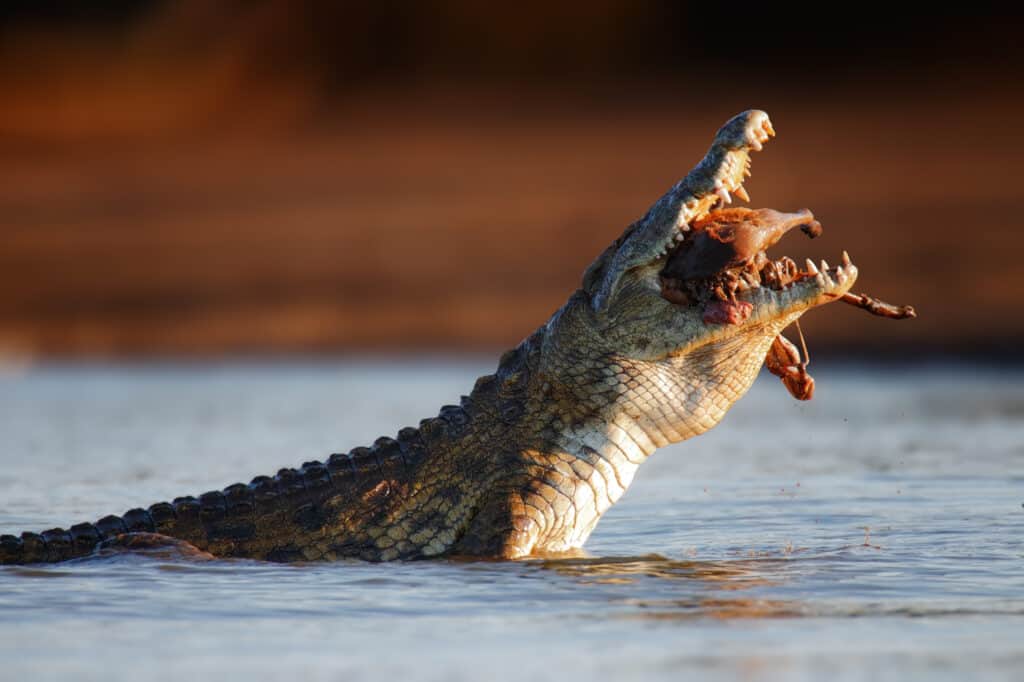
14 of the 23 crocodilian species dig and live in burrows for various reasons.
©Mari Swanepoel/Shutterstock.com
According to the American Scientist, 14 of the 23 crocodilian species dig and live in burrows for various reasons. They do this with their snouts, forearms, and limbs and mostly pick locations near water bodies. Crocodile dens also serve as a resting or hiding place for them when the water levels are too low to cover or hide them.
Nile crocodiles are the deepest known burrowers of all crocodiles. They dig dens up to 39 feet deep near the banks of water sources like rivers or lakes. These crocodiles lay and protect their eggs in their burrows.
4. Alligators
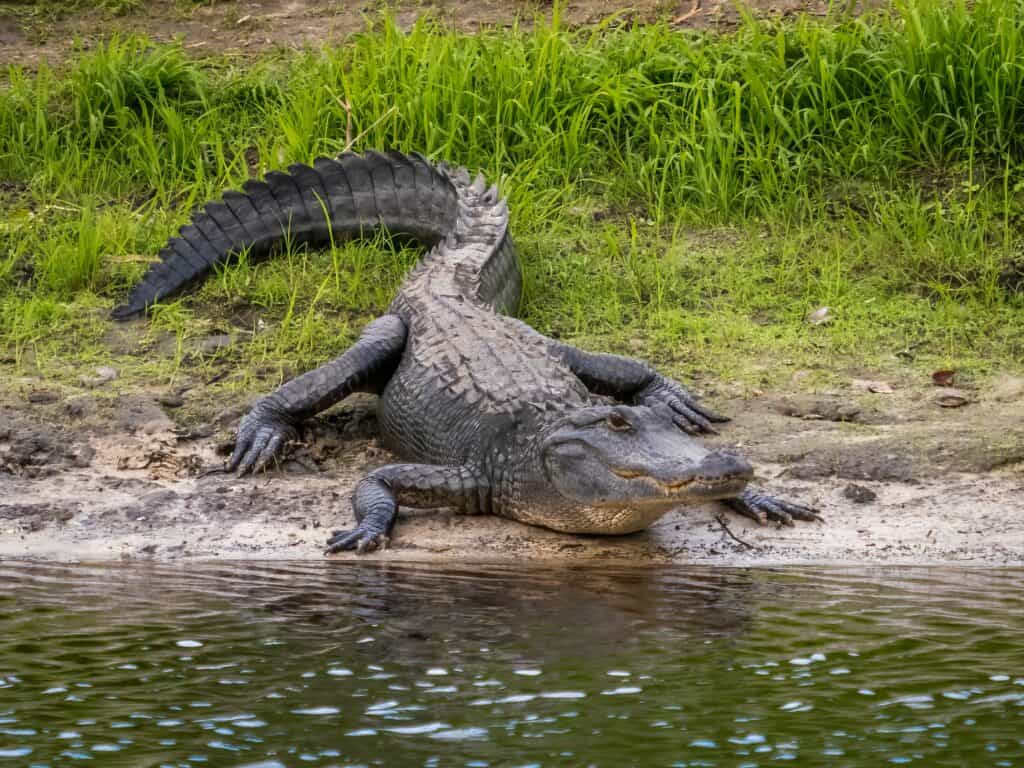
Alligators, such as the Chinese alligator, dig burrows for protection from extreme hot or cold weather.
©Jim Schwabel/Shutterstock.com
Alligators are another reptile species known to burrow. Their burrows serve as protection from extreme hot or cold weather. They build these burrows at the river banks that provide them with enough mud to make the walls of their den. Then, they fill their dens with water.
Alligators may build their dens themselves or use an already dug den. One alligator species that burrows is the Chinese alligator. They dig their burrows using their snouts and clawed front feet.
5. Armadillo
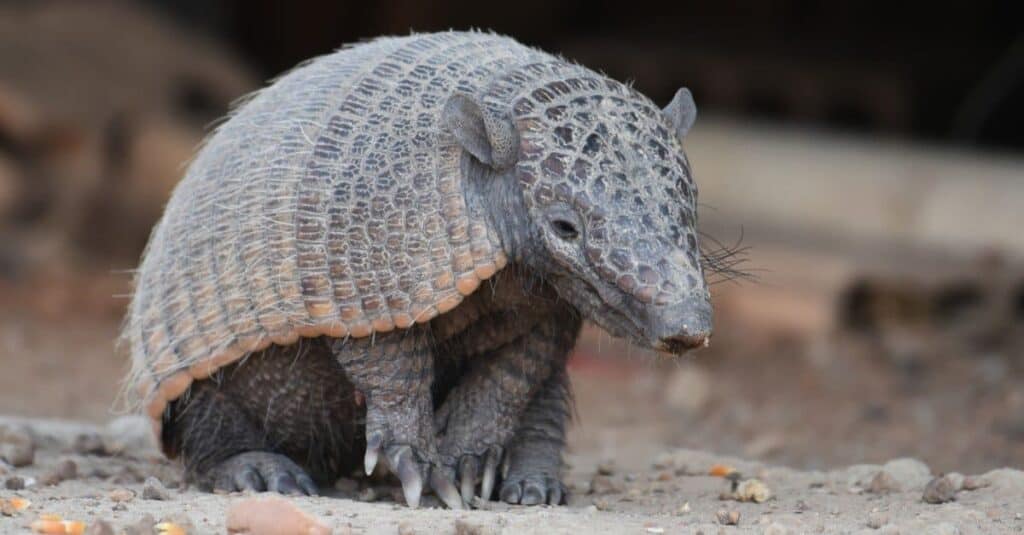
Armadillos dig dens underground and spend about 65 percent of their lives in the winter
©iStock.com/Rini Kools
Armadillos use their burrows or dens year-round and spend about 65 percent of their lives underground. These animals are expert diggers that also dig for food and have a great sense of smell. They use their dens to stay safe from predators and harsh weather. They also have their young in their burrows but do not share their burrows with other adult armadillos.
Armadillos make burrows around warm areas and often pick rainforests, deserts, and temperate grasslands to make their homes. They may make homes under rocks, tree stumps, and brush piles and their dens can be anywhere from 4 to 24 feet wide and 5 feet deep.
When armadillos build dens, they use their snouts and forefeet to dig up soil. These animals may build different burrows in different parts of their territories.
6. Birds
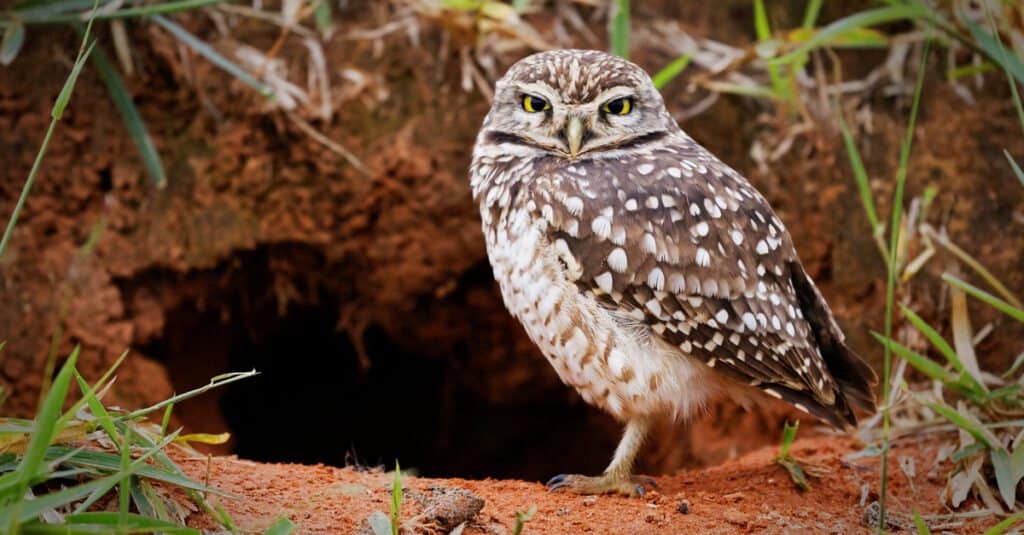
The burrowing owl and the kingfisher species are two bird species known to dig dens underground.
©Mauricio S Ferreira/Shutterstock.com
Although birds are not large animals, they are perhaps the last animals that you would expect to burrow beneath the ground. However, some bird species actually do. Two of these birds are the burrowing owl and the kingfisher.
The burrowing owl lives in burrows beneath the ground and scares predators by making rattlesnake-like sounds. These owls may dig their own dens or takeover previously dug holes. Burrowing owls choose areas with grasslands, deserts, agricultural areas, or other dry areas with low vegetation. They are also known to line their dens or burrows with manure, grass, or feathers.
Kingfishers dig their nests along sandy banks with their clawed feet, despite the short length of their legs. They avoid places with vegetation so that tree roots do not make it hard for them to dig. Their dens are usually 3 to 6 feet deep but can be as deep as 15 feet. Building these burrows can take anywhere from 3 days to 3 weeks.
Up Next:
Discover the Massive Crocodiles that Live in Dens 40 Feet Below the Surface
10 Snakes That Burrow Underground
Rattlesnake Den with a Half Dozen Snakes Discovered in Arizona Backyard
The photo featured at the top of this post is © iStock.com/Philou73
Sources
- Audubon, Available here: https://www.audubon.org/news/belted-kingfishers-nest-burrows-15-feet-long
- American Scientist, Available here: https://www.americanscientist.org/article/the-evolutionary-advantage-of-burrowing-underground
- San Diego Zoo, Available here: https://zoo.sandiegozoo.org/animals/chinese-alligator
Thank you for reading! Have some feedback for us? Contact the AZ Animals editorial team.






